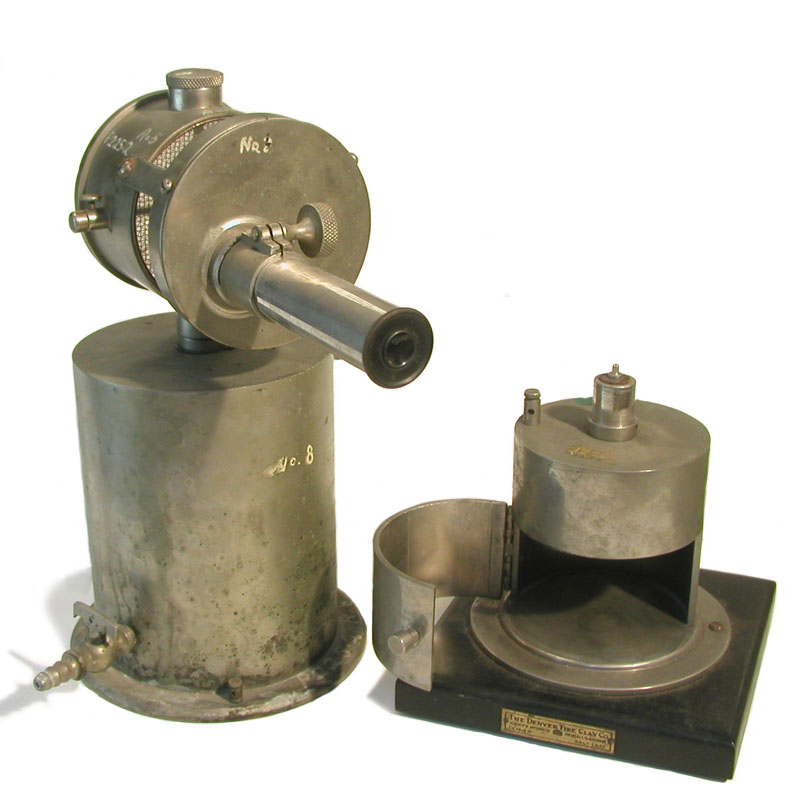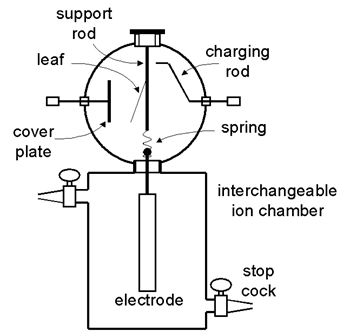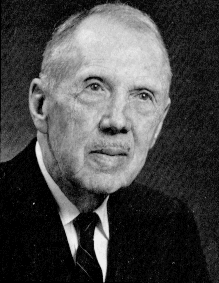Lind Electroscope (ca. 1925)


Samuel Colville Lind first described what became known as the “Lind Electroscope” in 1915. As best as I can determine, the commercial version of the electroscope was manufactured by the Sachs-Lawlor Company and distributed by the Denver Fire Clay Company (Standard Methods of Chemical Analysis p. 419, Vol. 1, Van Nostrand, 1922).
Its design is extremely similar to that of the electroscope described in 1908 by Cheneveau and Laborde. The latter credit Pierre Curie for his contribution to its development, but for some reason Lind does not acknowledge Cheneveau and Laborde. This is odd because Lind must have been familiar with their electroscope - he worked in Marie Curies laboratory in 1910.
The Lind electroscope, like that of Chenevaux and Laborde, was developed specifically for the measurement of radioactive samples - in particular, radium and its decay product, radon. The key feature of both electroscopes is that they employ separate interchangeable chambers for samples of different types.

The chamber employed for radon measurements (left side of above photo) has two stopcocks that can be used to seal off the chamber. The central electrode, a vertical brass cylinder ½ inch in diameter, terminates in a small metal ball on top of the chamber. When the chamber is connected to the electroscope, this ball comes into contact with a spring at the bottom of a vertical rod in the electroscope from which an aluminum leaf (ca. 5 mm wide and 4.5 cm long) is suspended. The rod and leaf are charged via a moveable charging rod controlled by a knob on the side of the electroscope. A vertical flat plate, controlled from the opposite side of the electroscope, can be positioned beside the leaf to protect it when the electroscope is moved.
The movement of the leaf is viewed through a microscope mounted on the side of the electroscope.
The chamber for use with solid samples (right side of first photo) employs a hinged door through which the sample can be introduced or removed.
This particular example was employed in the Hale Building at the University of Colorado. The property cards are dated 4-6-26.

Sam Lind
Sam Lind
Born in Tennessee, Lind first worked with radioactivity at the laboratories of Marie Curie and Stefan Meyer in 1910 and 1911. Upon returning to the United States his career took him from the Bureau of Mines in Denver, to the University of Minnesota, and finally, to Oak Ridge National Laboratory.
He is generally credited with being one of the first, if not the first, radiochemist.
Lind died in 1965 while trout fishing in the Clinch River. He drowned before he could wade to shore following the release of water from an upstream dam. Phil Rudolph, Lind's longtime coworker, told me that the day before Lind died, he commented that when his death came, he wanted it to be while fishing.
Electroscope and chamber donated by Albert Bartlett.
Thanks to Bert Coursey for his kind assistance.
References
Lind, S.C. “The Memoirs of Samuel Colville Lind.” Journal of the Tennessee Academy of Science. (Jan. 1, 1972).
Parsons, C.L., Moore, R.B, Lind, S.C., Schaefer, O.C., “Extraction and recovery of radium, uranium and vanadium from carnotite,” U.S. Bureau of Mines Bulletin 104, Mineral Technology 12, Washington, U.S. Govt Printing Office (1915).
Lind, S.C., “Practical methods for the determination of radium: I. Interchangeable electroscope and its use,” Jour. of Industrial and Engineering Chemistry, 7, 406-410 (1915a).
Lind, S.C., “Practical methods for the determination of radium: II. The Emanation Method,” Jour. of Industrial and Engineering Chemistry, 7, 1024-1029 (1915b).
Laidler, K.J. “Samuel Colville Lind. June 15,1879-February 12, 1965.” Biographical Memoires. National Academies Press. Vol. 74 (1998).
